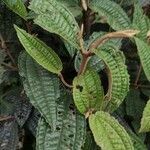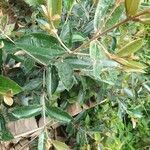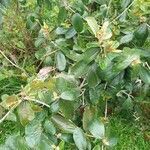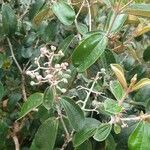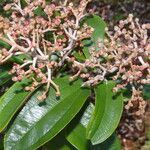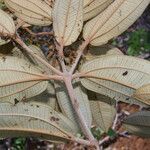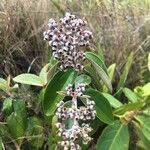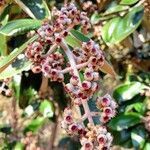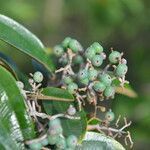Shrub or small tree to 6 m. tall; younger branches finely cinereous-tomentulose, soon glabrescent; petioles stout, tomentulose, 5-15 mm. long; leaf-blades sub-coriaceous, oblong, ovate-oblong, or elliptic, 7-15 cm. long, about two-fifths as wide, obtuse to short-acuminate, entire, emarginate or subcordate at base, 5-nerved, the outer pair commonly submarginal, above when mature glabrous, dark green, and shining, beneath closely and finely cinereous-tomentulose; panicle 8-20 cm. long, freely branched, cinereous or ferruginous; flowers 5-merous, sessile, secund and alternate on the ultimate branches of the panicle; hypanthium about 2 mm. long, densely tomentose; calyx-tube prolonged about 0.5 mm., its lobes very short, triangular; petals obovate, about 3 mm. long; stamens nearly isomorphic; con-nective briefly prolonged below the thecae and dilated into an oblique cordate organ; stigma capitate.
More
A small tree or shrub. It grows 2-3 m high. The leaves are opposite and 10-15 cm long by 3-7 cm wide. The leaf stalk is 2 cm long. The flowering stalk is 10-15 cm long. The flowers are white. They do not have flower stalks. The fruit is 5-6 mm across.
Mostly in dry or moist, open, pine forest, at elevations up to 800 metres. Heavy clay soils in pastures and thickets and on scrubby hillsides; at elevations from 150-1,200 metres in Jamaica.
More
A tropical plant. It requires a minimum of 1,000 mm rainfall per year.
